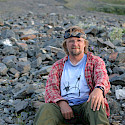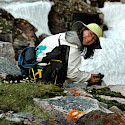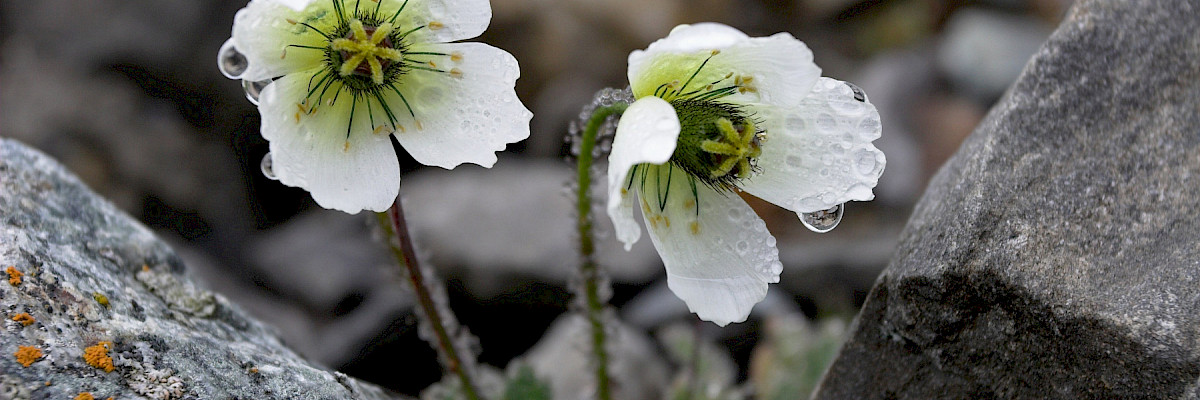
CFG: CAFF's Flora Group
The CAFF Flora Group (CFG) promotes, encourages and coordinates research and conservation of Arctic flora, vegetation, and habitats.
The CFG works to enhance the exchange of information on Arctic flora and vegetation and factors affecting the status and trends in Arctic flora species.
The CFG ensures that scientists, conservationists, and managers interested in Arctic flora and vegetation have a forum to promote, facilitate, and coordinate conservation, management, and research activities of mutual concern.
Traditionally, conservation and research activities for Arctic plants have not been well coordinated in terms of common direction, concerns, reporting, and information exchange. With some notable exceptions, governmental and non-governmental groups are often organized bilaterally. As such, plant conservation and research activities generally lack a circumpolar perspective.
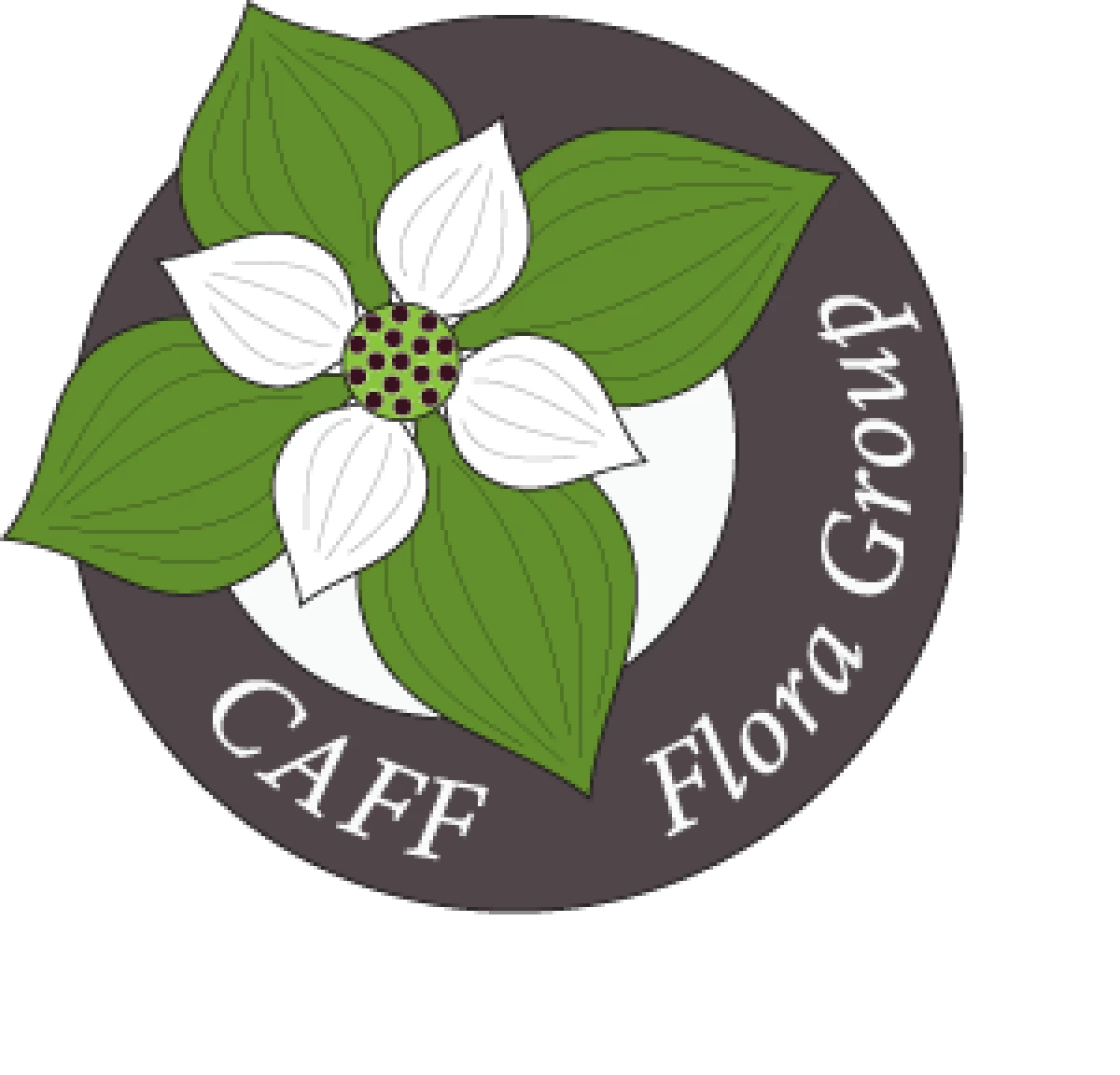
Obejctives
- conserve arctic flora and fauna, their diversity and their habitats;
- protect the Arctic ecosystem from threats;
- develop improved conservation management, laws, regulations and practices for the Arctic;
- collaborate for more effective research, sustainable utilization, and conservation; and
- integrate Arctic interests into global conservation flora.
Arctic Vegetation Archive - AVA
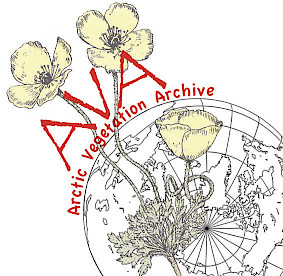 The Arctic Vegetation Archive (AVA) is a data repository for vegetation-plot observations (also called phytosociological relevés) collected from across the circumpolar region. The goal of AVA is to establish and maintain a single meta-database to unite and harmonize vegetation data from the Arctic tundra biome. We also aim to develop an Arctic Vegetation Classification (AVC) and to make the data available as a baseline for future research and conservation applications.
The Arctic Vegetation Archive (AVA) is a data repository for vegetation-plot observations (also called phytosociological relevés) collected from across the circumpolar region. The goal of AVA is to establish and maintain a single meta-database to unite and harmonize vegetation data from the Arctic tundra biome. We also aim to develop an Arctic Vegetation Classification (AVC) and to make the data available as a baseline for future research and conservation applications.
In order to generate comparable vegetation-plot data across the Arctic, several standards are applied. The standardized methodology for describing vegetation is the Braun-Blanquet approach (Walker et al. 2017), which requires at a minimum, complete lists of species and visual estimates of their cover abundance, typically of an area of 2m x 2m square. Plot observational data are imported and stored in the software program TURBOVEG(Hennekens & Schaminée) following the nomenclature of the Pan Arctic Species List (PASL) compiled for the archive.
Over 31’000 potential vegetation-plot observations for inclusion into AVA are identified (Walker et al. 2018), some of them reaching back 50 years. Currently, some data are stored in national databases, while many older data sets are not included yet. Planned efforts include the digitization of high priority data sets and further standardization of national databases (Walker et al. 2019b).
Several publications address the background and development of AVA.
Vegetation Plot Data
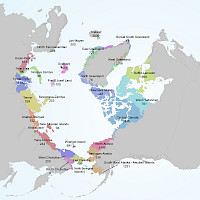 A total of 31’466 plots were identified for potential inclusion into AVA (Walker et al. 2019b). The map shows the number of identified vegetation plots for each Arctic bioclimatic subzone (Yurtsev 1994). For each plot, the species diversity is recorded according to the Braun-Blanquet or a similar approach.
A total of 31’466 plots were identified for potential inclusion into AVA (Walker et al. 2019b). The map shows the number of identified vegetation plots for each Arctic bioclimatic subzone (Yurtsev 1994). For each plot, the species diversity is recorded according to the Braun-Blanquet or a similar approach.
Walker, D.A., Schaepman-Strub, G., Plekhanova, E., and Pierce, J. (Eds). 2019b. The Arctic Vegetation Archive and Arctic Vegetation Classification: Proceedings and abstracts from two Workshops. CAFF Proceedings Report. Conservation of Arctic Flora and Fauna, Iceland.
Yurtsev, B. 1994. Floristic Division of the Arctic. Journal of Vegetation Science 5: 765-776. IAVS; Opulus Press Uppsala, Sweden.
Pan-Arctic Species List
The Arctic is the only biome with a complete plant species list. However, the list requires maintenance and periodic updates and a new version has to be released if new species are discovered, new names assigned, or classification changes occur.
In the Arctic, about 2870 vascular plants, 740 mosses, 220 liverwort taxa and 1700 lichens subtypes are recorded (Reynolds et al. 2013). The most current species list (April 2018) contains accepted species names, species unique numerical and letter codes, synonyms, taxonomic groups and PanArctic Flora ID for vascular plants. The import of vegetation-plot observations into Turboveg is possible from countries with disparate floras because of the PASL and its comprehensive list of synonyms.
Download the list(April 2018)
Standardized Methodology for Vegetation Records
The standardized methodology for vegetation records is the Braun-Blanquet sampling method (Walker et al. 2017) which we recommend be followed for all vegetation relevés. The typical relevé covers 1-4 m2 in the tundra, although we recommend when beginning a study to calculate a species area curve to determine the best plot size to capture adequate species diversity within a given vegetation community. Record of the plot area and shape is required for comparative purposes when submitting data sets to the archive.
The species cover abundance is indicated by a categorical scalar from rare (r) to 76-100% (5; (see table below). Species cover can also be recorded as a percent in the field and later categorized in the Braun-Blanquet Plant Species Cover Abundance Scale. The sociability of the species is indicated on a scale from 1 to 5. For subsequent localization of the plot it is highly important to take accurate GPS coordinates (datum WGS 84 is recommended) of the observation location and not only mark it on a map.
Walker, D.A. , Daniëls, F.J.A., Matveyeva, N.V., Šibík, J., Walker, M.D., Breen, A.L., Druckenmiller, L.A., Raynolds, M.K., Bültmann, H., Hennekens, S., Buchhorn, M.Epstein, H.E., Ermokhina, K., Fosaa, A.M., Hei∂marsson, S., Heim, B., Jónsdóttir, I.S., Koroleva, N., Lévesque, E., MacKenzie, W.H., Henry, G.H.R., Nilsen, L., Peet, R., Razzhivin, V., Talbot, S.S., Telyatnikov, M., Thannheiser, D., Wirth, L.W. and Webber, P.J.. 2018. Circumpolar Arctic Vegetation Classification Phytocoenologia 48(2): 181-201. (PDF)
Braun-Blanquet Plant Species Cover Abundance Scale
| r | Rare |
| + | Common, but <1% cover of taxa |
| 1 | 1-5% cover of taxa |
| 2 | 6-25% cover of taxa |
| 3 | 26-50% cover of taxa |
| 4 | 51-75% cover of taxa |
| 5 | 76-100% cover of taxa |
Braun-Blanquet Sociability
| 1 | Individually growing |
| 2 | Scattered groups or tufts of plants |
| 3 | Patches or cushions |
| 4 | Large patches |
| 5 | Large and fairly continuous mats of one taxon |
Turboveg
TURBOVEG is currently the standard for Arctic vegetation-plot observations allowing the AVA to apply standardized plant nomenclature during data entry and to create a uniform format of the vegetation record of relevés.
When not being familiar with the TURBOVEG software, the following manual can be used
During an AVA workshop in Arkhangelsk, 2019, the following suggestions were developed for data entries:
- Consistent column headers for all contributing data to the AVA. Column headers are limited to ten characters.
- The source of the proposed fields is either standard Turboveg or added for the AVA. Fields are either alphabetic characters (C) or numbers (N) or a combination (C/N).
- Fill in codes for fields with popup lists. For numerical fields with no data, indicate '-9'. For categorical fields, check pop-up list in data dictionary for an alternate option or leave blank.
- Note: Total number of species, vascular plants, mosses, liverworts and lichens will be generated in Turboveg.
- Standardize data in the national AVAs, including use of unique Turboveg relevé numbers (e.g., Alaska (10000-19999), Russia (20000-29999), Canada 30000-39999), etc.); development of country archive coordinators; development of species synonym lists for each country linked to the current Pan-Arctic Species List (PASL).
(Walker et al. 2019b)
Here is an example of the Russian Arctic vegetation archive in two excel sheets and csv processed in TURBOVEG:
Data of species:yava_Bovan_ksermokhina_2005_spp_modsrc.xlsx
Environmental description of investigated area: yava_Bovan_ksermokhina_2005_env_fortv_full_header.xlsx
Links to National Vegetation Databases Containing Arctic Vegetation Data
| Alaska Arctic Geoecological Atlas | http://arcticatlas.geobotany.org/ |
| European Vegetation Survey | http://euroveg.org/ |
| Russian archives | https://avarus.space/ |
| Canadian National Vegetation Classification | http://cnvc-cnvc.ca/ |
| US National Vegetation Plot Database | http://vegbank.org/ |
| Nature Serve US and Canada | https://www.natureserve.org/ |
| Nature Serve explorer and Species Dataset of US and Canada | http://explorer.natureserve.org/ https://www.natureserve.org/conservation-tools/national-species-dataset |
| European Vegetation Survey | https://www.synbiosys.alterra.nl/evc/ |
Relevant Publications
Here are relevant publications addressing the AVA and it’s aims.
Breen, A., Sibik, J., Druckenmiller, L., Daniels, F., Hennekens, S., Walker, M., et al. 2017. Status of the Circumpolar Alaska Vegetation Archive and the regional arctic Alaska prototype. Presented at Arctic Science Summit Week, Prague, CZ, 31 March-7 April. (Abstract O 038, p. 129)
Walker, D.A. 2017. Second International Arctic Vegetation Archive Workshop, Prague, CZ, 30-31 March. Workshop Report to the IASC Secretariat. (PDF)
Walker, D.A. Breen, A.L., Raynolds, M.K. & Walker, M.D. (Ed). 2013. Arctic Vegetation Archive (AVA) Workshop, Krakow, Poland, April 14-16, 2013. CAFF Proceedings Report #10. Akureyri, Iceland. ISBN: 978-9935-431-24-0.
Walker, D.A., Breen, A.L., Druckenmiller, L.A., Sibik, J., Hennekens, S., Daniels, F.J.A., Matveyeva, N.V., MacKenzie, W.H., Walker, M.D. & Wirth, L.M. 2017. An Arctic Vegetation Archive for circumpolar arctic vegetation classification. Presented at Arctic Science Summit Week, Prague, CZ, 31 March-7 April. (Abstract P 150, p. 137) (Poster)
Walker, D.A. , Daniëls, F.J.A., Matveyeva, N.V., Šibík, J., Walker, M.D., Breen, A.L., Druckenmiller, L.A., Raynolds, M.K., Bültmann, H., Hennekens, S., Buchhorn, M.Epstein, H.E., Ermokhina, K., Fosaa, A.M., Hei∂marsson, S., Heim, B., Jónsdóttir, I.S., Koroleva, N., Lévesque, E., MacKenzie, W.H., Henry, G.H.R., Nilsen, L., Peet, R., Razzhivin, V., Talbot, S.S., Telyatnikov, M., Thannheiser, D., Wirth, L.W. and Webber, P.J.. 2018. Circumpolar Arctic Vegetation Classification Phytocoenologia 48(2): 181-201. (PDF)
Walker, D.A., Schaepman-Strub, G., Plekhanova, E., and Pierce, J. (Eds). 2019b. The Arctic Vegetation Archive and Arctic Vegetation Classification: Proceedings and abstracts from two Workshops. CAFF Proceedings Report. Conservation of Arctic Flora and Fauna, Akureyri, Iceland. (Proceedings)
Walker, D.A., Raynolds, M.K., Breen, A.L., Druckenmiller, L.A., Sibik, J., Epstein, H.E., Byatt, U.S. & Schaepman-Strub, G. 2019a. Circumpolar Arctic vegetation classification, mapping, and transects: a framework for Arctic change monitoring and analysis. Presented at Arctic Science Summit Week, Arkhangelsk, Russia, 22-30 May. (Poster)
 Arctic Council Working Group
Arctic Council Working Group 